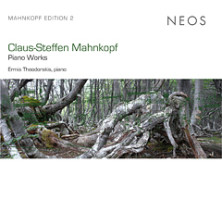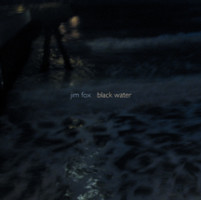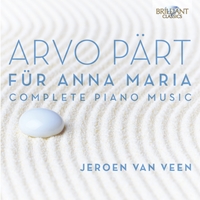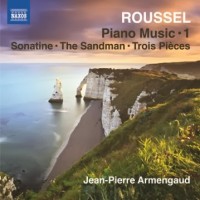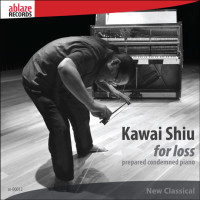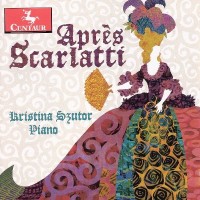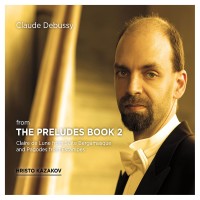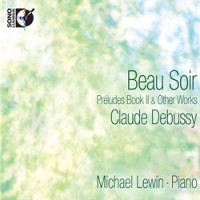Piano Factory 13.
|
Grant Chu Covell [May 2014.]
“Mahnkopf Edition 2: Piano Works.” Claus-Steffen MAHNKOPF: Rhizom (1988-89); 5 kleine Lakunaritäten (1994-95); Kammerminiatur (1995); Kammerstück (1995); Le rêve d’ange nouveau (1999); Beethoven-Kommentar (2004); Prospero-Fragmente (2005). Ermis Theodorakis (pno). NEOS 11207 (1 CD) (http://www.neos-music.com/). Mahnkopf’s work is ripe with complexity and interconnectedness. This student of Ferneyhough and Jürgen Habermas, et al., produces score pages of daunting density with precisely notated rhythms and dynamics. Boulez is a predecessor, evident in the Schoenbergian and fractal-like explorations of 5 kleine Lakunaritäten. Manhkopf’s vigorous attacks remind that the piano does not sustain. Indeed this conceit sparks Rhizom, a Glenn Gould homage, in which multiple layers of material intersect and interfere. Theodorakis distributes himself all across the keyboard to give justice to Mahnkopf’s rapacious pieces. It impresses that Theodorakis can execute this music as expressively as he does. Notes instruct that some pieces are extracts from other works which altogether form a “poly-work.” Thus a Kammerkonzert for piano and six instruments yielded two separate trios, Kammerminiatur, a one-minute piano cadenza, and Kammerstück, the remainder of the solo piano part. Asked to contribute a contemporary “Diabelli Variation,” Mahnkopf examined Beethoven’s own 33rd to create the shapely Beethoven-Kommentar. From another poly-work, the piano part from the concerto Prospero’s Epilogue stands alone as Prospero-Fragmente.
Jim FOX: Black Water (1984). Bryan Pezzone (pnos). Cold Blue Music CB0037 (1 CD) (http://www.coldbluemusic.com/). The initial octave tremolo puts one in mind of the first movement of Mahler’s Second, a relevant comparison: Fox’s 18:05 single movement alternates stormy and serene. Fox’s language isn’t late 20th-century Austro-Germanic, even if he looks towards Romantic epics. The title is borrowed from Alberto Manguel’s anthology of “fantastic literature.” We hear stretched minimalist gestures along with grand pianistic cascades. Dissonance is softened by widely spaced intervals. Subtle reversals occur along the way: Treble tremolos migrate into the bass and deep octaves become high bell tones. Multi-tracking permits Pezzone to play all three piano parts. “Für Anna Maria, Complete Piano Music.” Arvo PÄRT: Für Alina (1976); Variationen zur Gesundund von Arinuschka (1977); Ukuaru valss (1973, rev. 2010); Für Anna Maria (2006); Spiegel im Spiegel (1978)*; Pari intervallo (1976, rev. 2008)*; Hymn to a Great City (1984, rev. 2004); Fratres (1977, rev. 1980)*; Vier leichte Tanstücke ‘Musik für Kindertheater’ (1956-57); Sonatina No. 1 (1959); Sonatina No. 2 (1959); Partita, Op. 2 (1958). Jeroen van Veen, Sandra van Veen* (pnos). Brilliant Classics 94775 (2 CDs) (http://www.brilliantclassics.com/). More than just an anthology programming Pärt’s complete piano works, van Veen takes the listener deep into the composer’s distinctive idiom. Let’s remember that Pärt, who traveled the route common to most every postwar composer, underwent a stylistic change in the mid-1970s. Van Veen’s two-disc program isolates the pre-“Tintinnabuli” works: four easy dances, two Sonatinas, and a Partita. Would these early works command attention if Pärt’s mature style weren’t so popular? Van Veen gives them a very fair outing. Of the works generally associated with Pärt’s mature style, Für Anna Maria is taken twice and Für Alina four times. Except for a surprise skipping gesture which breaks its steady eighths, the tiny Für Anna Maria’s reappearance (1:21 and 1:09) might pass unnoticed, especially as the second pass’s faster tempo elicits a different character. Für Alina distributes twinned somber b-minor lines across 15 measures on two pages. Van Veen twice plays the work as written (2:42 and 3:15); however, he wraps the entire program by broadly interpreting the direction, Ruhig, erhaben, in sich hineinhorehend, for colossal opening and closing statements (20:18 and 23:07), repeating the entire work multiple times with hands in different octaves. Despite its winsome placidity, Für Alina lacks the striking power of other signature works which appear here in liquid two-piano transcriptions: Spiegel im Spiegel and Fratres. When I think of Pärt and the piano, there’s the concerto-like Lamentate, but most distinctively, the prepared piano part of the original Fratres.
“Piano Music, Vol. 1.” Albert ROUSSEL: Sonatine, Op. 16 (1912); Le Marchand de sable qui passe, Op. 13 (1908); Trois Pièces, Op. 49 (1933); Prélude et Fugue, Op. 46 (1934, 1932); Doute… (1919); Petit Canon perpetual (1912); L’Accueil des Muses (1920); Segovia, Op. 29 (1925); Conte à la poupée (1904). Jean-Pierre Armengaud (pno). Naxos 8.573093 (1 CD) (http://www.naxos.com/). Roussel’s unfamiliar piano works can be difficult to interpret, no less execute. The later works’ hand crossings are hard to keep unknotted, and Roussel was fond of adding seconds and dissonant notes for color and percussive effect as in the near atonal Doute…. Interpretively, Roussel can be hard to shape as he anticipates the performer’s mastery of preceding classic styles, even if he does turn away from them. Armengaud has experience, but makes a less than ideal Roussel interpreter. He plays too romantically when Roussel asks for metronomic patter as in the Sonatine, especially in the second and concluding movements which require steely focus. Roussel’s frequent jamming of extra fourths and fifths into the left hand can result in uneven weight simply to get all the pitches to sound. Armengaud’s runs in the Prélude, Op. 46, are sloppy and Op. 49’s three pieces are blurry when they should be crisp. Armengaud is neither incisive nor acid, so when the sun finally shines in dolce passages, the warmth does not astound. This is the first recording of the solo piano version of Le Marchand de sable. Two more volumes are expected to complete all of Roussel’s piano works. No surprise that I vastly prefer Jean Boguet (rec. 1969, Philips 422 138-2) in these piano pieces. Perhaps the recording’s age adds required acidity. Boguet generally takes a faster tempo without sacrificing precision. His Op. 49 reveals many more moods.
Kawai SHIU: for loss (2012). Kawai Shiu (prepared condemned piano). Ablaze Records ar-00012 (1 CD) (http://www.ablazerecords.net/). Sparked by a colleague’s encounter with the destroyed remnants of a piano washed onshore after the 2011 Fukushima earthquake and tsunami, for loss can be read as a requiem for those affected by the natural disaster as well as a swan song of abandoned instruments. Shiu searched long and hard for a suitable “condemned piano.” Former ubiquitous status symbols in aspiring middle-class homes, countless upright pianos precisely manufactured to promise entertainment now languish in drafty barns and damp basements. Shiu has taken one such veteran with stuck keys and missing strings, and has built a monumental and gorgeous 62-minute essay through studio superimpositions and multi-tracking. In terms of construction, we ought to discuss this amongst ea works, except that the source material is distinctly piano. Shiu cajoles an endless variety of sounds, subtle and dramatic from the derelict instrument. We hear knocks, gongs and bells, semi-traditional prepared piano sounds, evocations of qin and cimbalom, broken melodies and pitchless mechanical chatter. There are 19 mostly short movements in the cycle, each centering around a particular capability of the deranged machine, although aspects and contours frequently reappear. Without knowing the title and the circumstance, it would be impossible to miss the alternation between menace and calm.
“Après Scarlatti.” Norman DELLO JOIO: Salut to Scarlatti (1981). Marcel BITSCH: Hommage à Domenico Scarlatti (1967). Clifford CRAWLEY: Après Scarlatti (2008). Clark ROSS: Domenico 1 and 2 (2009). Dennis FARRELL: Antiche Sonate from Six Original Sonatas After the Manner of Domenico Scarlatti (2004). Marcelle DE MANZIARLY: Hommage à Scarlatti (1950). Marc-André HAMELIN: Ommagio a Domenico Scarlatti (1992). Kristina Szutor (pno). Centaur Records CRC 3178 (1 CD) (http://www.centaurrecords.com/). Szutor’s tricky but sparkling program reminds us of many important things about Dominco Scarlatti. Firstly, Scarlatti was an expert at the short form. What we call sonatas are essentially Scarlatti elegantly juggling contrasting ideas. Secondly, meant for two manuals, his sonatas can be challenging when realized on piano because of difficult finger crossings and awkward note patterns. Thirdly, Scarlatti blended the sounds of his Spanish surroundings into his music. Apt modern homages ought to demonstrate these three qualities. As expected, most of these pieces are short, typified by de Manziarly’s perfect Hommage. It appears Dello Joio and Bitsch have tried Scarlatti’s idiom by extending Scarlatti’s binary form into larger structures. Perhaps I have Roussel on the brain, but Bitsch’s Scarlatti continues Roussel’s acerbic neo-Classicism. Farrell’s three sonatas offer precise Scarlatti echoes. I am keen to hear Farrell’s matching Sonate Nuove set. Written for this recording, Ross’ Domenico 1 may be the exception as its 8:23 broadens into more of a Classical sonata exploration. Domenico 2 delivers requisite flamenco cues. Also composed for this release, Crawley looks beyond Scarlatti’s sonatas into the pre-Classical period. Szutor finishes with Hamelin’s clever Ommagio, perhaps my favorite of the bunch if only because I’ve heard it before.
Claude DEBUSSY: Clair de Lune from Suite bergamasque (1890-1905); Pagodes from Estampes (1903); 11 Préludes from Préludes Book II (1912-13). Hristo Kazakov (pno). (1 CD) (http://www.hristokazakov.com/). Claude DEBUSSY: Beau Soir (1880; arr. Koji ATTWOOD, 2013); L’isle joyeuse (1904); Le petit berger (1906-08); Danse (Tarantelle styrienne) (1890); Élégie (1915); Étude No. 5, “Pour les octaves” (1915); Valse romantique (1890); La plus que lente (1910); Préludes Book II (1912-13). Michael Lewin (pno). Sono Luminus DSL-92175 (1 CD, 1 Blu-ray) (http://www.sonoluminus.com/). Debussy was an explorer of harmonies and effects. Kazakov, a fine and sensitive player, makes too much of the contrasts. Général Lavine’s oddities are enjoyably relaxed whereas the cakewalk’s familiar tonality passes dismissively. Debussy’s harmonies can be ravishing, yet excess rubato can make them insufferable. Kazakov omits the eleventh prelude, Les tierces alternées. His release was recorded live in 2009. I can only imagine that we’re spared a real-time mishap and audience noise. I may be a killjoy, but a program that opens with the overplayed Clair de Lune does not endear. Pagodes from Estampes also appears. Lewin plays the entire Book II of Préludes. He opens with a piano arrangement of Beau Soir, a Debussy potboiler less familiar without voice. Where Kazakov preceded Book II with just two pieces, Lewin introduces a more substantial eight. Lewin doesn’t dwell when Debussy strays into whole-tone passages or added harmonies, and he doesn’t rush through clear-cut traditional tonality. He’s also very clean when agility is required. I only listened to the standard CD disc which sounds fine. A modest complaint: The booklet and tray card are capricious with spelling (Canopes instead of Canope) and accents (Bruyéres instead of Bruyères). Kazakov is more passionate than Lewin. I’m perhaps unusual in that I prefer strict, non-cloying Debussy.
Bitsch, Crawley, De Manziarly, Debussy, Dello Joio, Farrell, Hamelin, J Fox, Mahnkopf, Pärt, Ross, Roussel, Shiu
[More Grant Chu Covell, Piano Factory]
[More
Bitsch, Crawley, De Manziarly, Debussy, Dello Joio, Farrell, Hamelin, J Fox, Mahnkopf, Pärt, Ross, Roussel, Shiu]
[Previous Article:
Atopos Survey 2. / EA Bucket 19. / Italian Vacation 12.]
[Next Article:
Schumann’s Kreisleriana, Op. 16]
|
